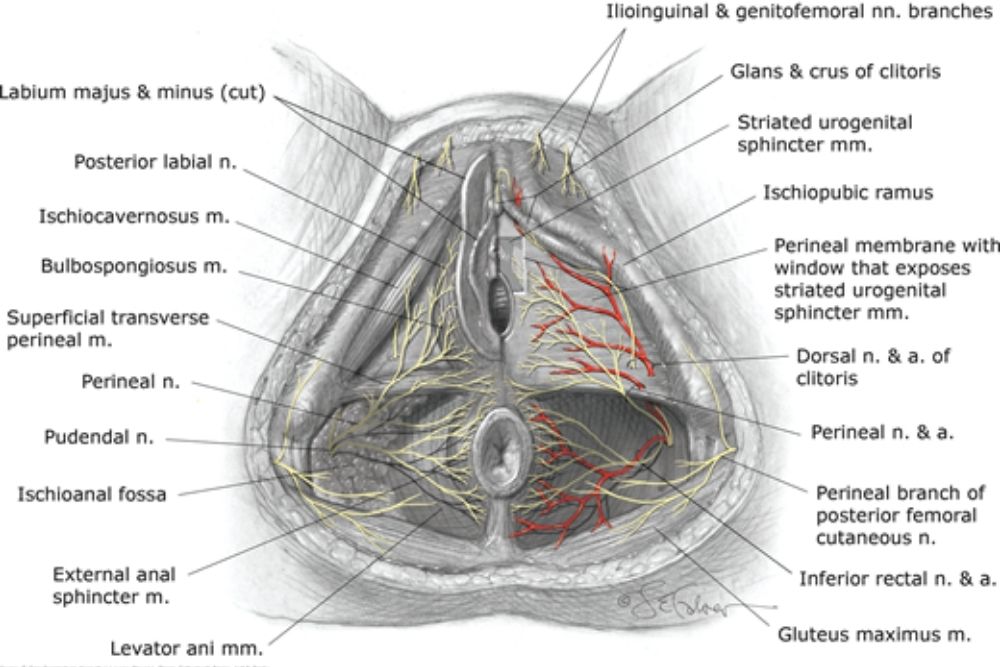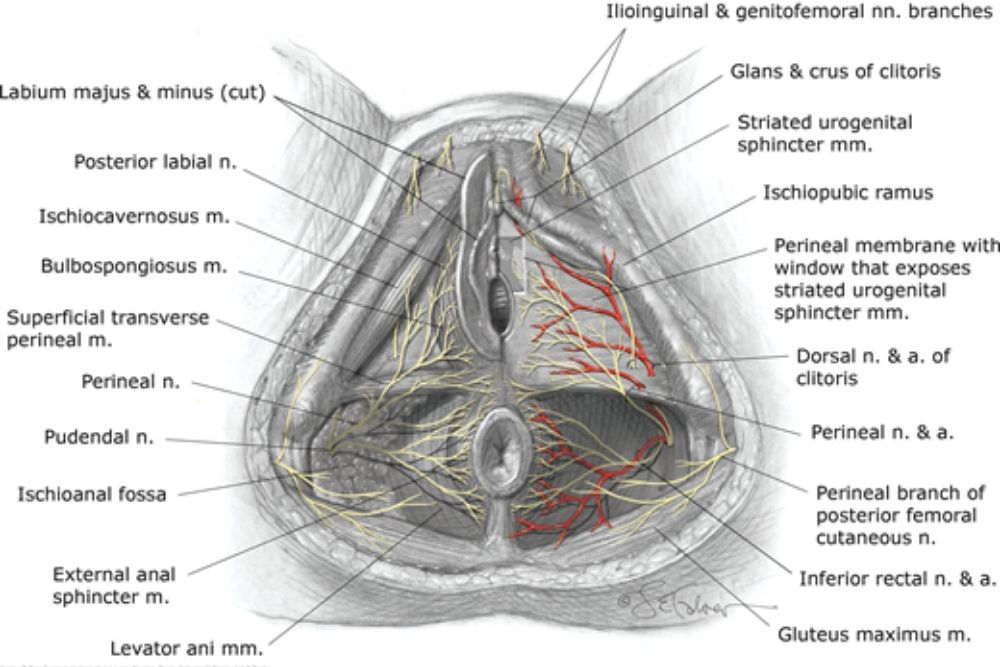The mysterious body part that is the taint goes by many names: perineum, gooch, grundel, chode, fleshy fun bridge, banus…twitter. Twitter is my personal favorite, but the list is endless.
However, there’s no use in deciding which nickname to pick for your fleshy fun bridge if you don’t even know where it is!
The anatomically correct term for the taint, perineum, offers some insight into its location on the body, but only if you are more familiar with Latin than you are your own body.

Some of the nicknames do proffer some clues, too, but perhaps they are only obvious once you know the answer.
Luckily for you, I do!
Continue reading to have all of your taint-related queries answered.
What Is A Taint?
The taint is a soft skin-covered part of your body that plays an important role. It has lots of nerve endings, which makes it one of the body’s erogenous zones.
It can be found on both male and female bodies, and it just so happens to be one of the most ignored erogenous zones for both genders.
Why Is It Called A Taint And A Perineum?
Firstly, the name ‘taint’ is more of an informal name for the body part.
Most people believe that the origins come from the fact that people noted that it is neither the anus nor the genitals. That is to say, ‘it ain’t your anus’, and ‘it ain’t your balls’.
The words ‘it’ and ‘ain’t’ combined to give us the very academic and technical term, taint. Words have been combined to form some of its other names, too.
Banus, for example, highlights the way in which the perineum joins the scrotum, i.e., the balls, and the anus. Twitter has a similar story, but I’ll let you guess which two words it combines.
As for the technical term, perineum, the origin is a little more boring.
To get technical, the word perineum came into the English language from Latin but stopped off to get some Greek input along the way. Originally, the perineum was thought to exist only on the male body, which significantly influenced its naming.
Perineum comes from the Greek περίνεοι, or περίς, which mean ‘male genitals’ and ‘penis’ respectively. This is because of the body part’s proximity to the penis on a man.
So, now that you know the perineum is located pretty near the genitals, let’s crack on.
Where Exactly Is It?
The formal whereabouts of the taint can be a bit confusing. So, we’re going to start off with the simple explanation.
In males, the taint is the flesh that sits in the space between the scrotum and the anus. In females, it is the flesh between the vulva and the anus.
In either case, it’s a pretty sensitive spot, and quite well hidden, so I’m not surprised you couldn’t find it.
The taint usually refers primarily to the visible structure between the genitals and the anus, as mentioned above. However, it also accounts for some of the deeper tissue and structures that we can’t see – no matter how flexible we are!
The perineum in both males and females sits below the pelvic diaphragm, between our legs.
This body part is linked to the pelvic outlet, which can be defined as the space enclosed within the circumference of the smaller part of the pelvis.
To get a clearer idea of the perineum, many people look at it as two triangles: the urogenital triangle, and the anal triangle.
The urogenital triangle is the anterior part, which means that it contains the parts of the perineum which are closer to the front of the body. These are the male’s penis or the female’s vagina.
The anal triangle is the posterior part of the perineum, which means that it contains the part of the body which is closest to the back of the body: the anus.

Where Exactly Does It Start, And Where Does It End?
Although the easiest way of defining the borders of the perineum is to say that it begins at the genitals and ends at the anus, it is quite a lot more complicated than that.
The shape and size of the taint differ from person to person, which can make it quite hard to establish clear boundaries.
There are some loosely formal anatomical boundaries that we can go by, though.
Where it starts nearest the front of the body: at the pubic arch and at one of the ligaments (the arcuate ligament) of the pubic bone.
Where it ends nearest the back of the body: at the tip of the tailbone – more formerly known as the coccyx.
Where it ends at the sides of the body: at each of the pubic bones inside the pelvis.
Where it is highest in the body/closest to the head (superior): at the pelvic floor.
Where it is lowest in the body/closest to the feet (inferior): at the skin – where you can see it on the outside of your body.
Why Is It There?
The perineum, although it might not look like much, is an important part of the structure of our intimate areas.
Recall one of the nicknames for the perineum, fleshy fun bridge – the perineum is a bit like a bridge. It supports many of the muscles and contributes to the functions, of the reproductive, urinary, and digestive systems.
Because of this, any damage to the perineum can result in damage to any three of those systems. So, not only does it just join the genital organs with the anus with a bit of skin, but it also provides support for many of the body’s essential functions.
Another important role that the perineum plays is an essential part of the health of the pelvic floor, most frequently in females. It actually ends up playing a huge role in childbirth. During the process of childbirth, the taint is strained and stretched because of its proximity to the vagina.
It’s not just used for serious stuff, though.
The perineum is also an erogenous zone, meaning it can be used to kick things up a notch in the bedroom.
Because not many people know where it is, or what it does, it is often missed out on when it comes to experiencing pleasure.
Now that you know where it is, though, there’s nothing holding you back from finding out how to stimulate it!

How To Stimulate The Perineum
Both genders have the perineum, meaning that both men and women can experience sexual gratification through stimulation of the area. Stimulation of the perineum can occur from both the inside and the outside of the body.
To stimulate the perineum from the inside, you have to use a different tactic depending on your gender.
If you are a male, the best way to stimulate the taint from inside your body is to insert two fingers into your rectum. While up there, you need to put some feelers out for some nerves; they’ll most likely feel little like small ropes.
Once you think you’ve found the right nerves, use your fingers to massage the area. You can work either in circular motions or by moving your fingers up and down – whatever you’d prefer!
If you are a female, to stimulate the perineum from the inside you need to insert two fingers into your vagina. When you are about four centimeters inside, push against the vagina in the direction of the anus.
Once you have applied enough pressure to the area, you should feel it being stimulated pleasurably.
To stimulate the perineum from the outside of your body, the tactics for male and female stimulation are a little more similar.
If you are a man, take your fingers and gently press on the outside of your perineum – i.e. the skin side of it that faces out from the body. Massage the area and adapt the pressure depending on your preference. You should feel the stimulation.
If you are a woman, use your fingers to caress the outside skin of the perineum, moving either up and down along it or in a circular motion. Again, you can vary the pressure until you find a sensation that feels nice.
Final Thoughts
If you began reading this article as a person with no idea what or where their taint was, we hope you now have a pretty clear idea.
From its supportive role in our reproductive, urinary, and digestive systems, to its more exciting role in sexual pleasure, the taint has many responsibilities and is much more interesting than it looks.
Now that you know where the taint is, there’s no stopping you from enjoying a world of pleasure!





